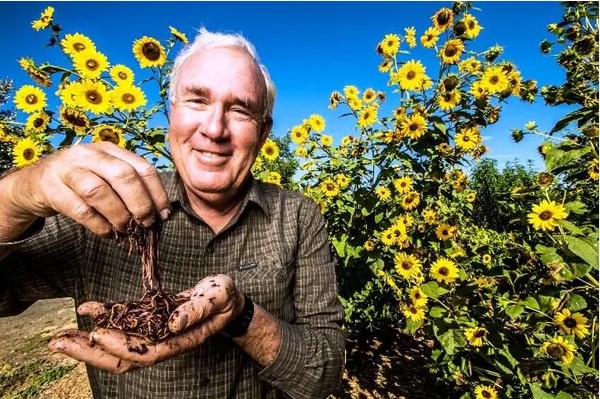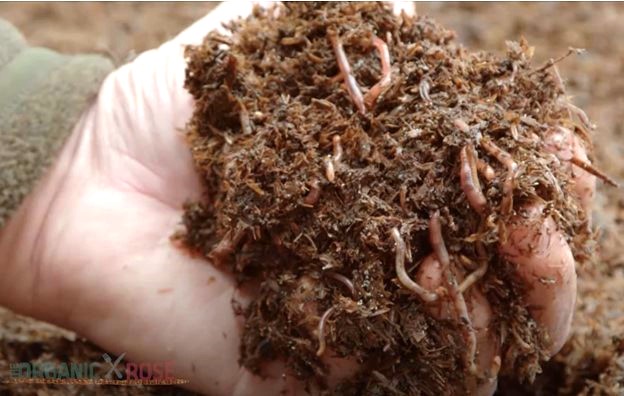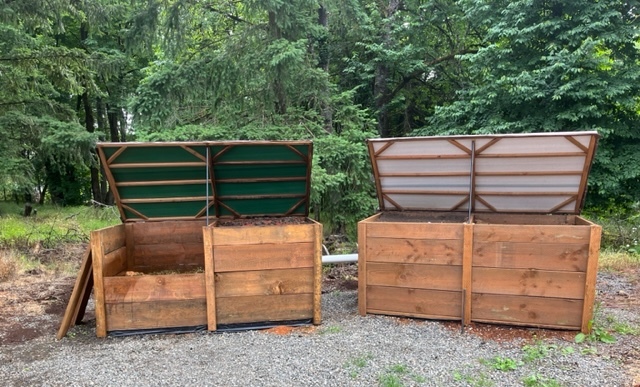| Aerated Compost Systems |
December 2023 Newsletter
Our annual savings event is back!Now through the end of January 2024 ...
Determine the right system for your farm/facility. Ask questions or schedule a FREE consultation. Purchase online (discount automatically applied at checkout) Let's get those piles cleaned up!
Business of Vermicomposting (#4)"Long before man existed the land was in fact regularly ploughed and still continues to be ploughed by earthworms. It may be doubted whether there are many other animals which have played so important a part in the history of the world as have these lowly organized creatures." Charles Darwin, Through the Action of Worms, 1881 Jack Chambers and TerraVesco It all began the day Jack Chambers' garden center told him his garden and compost needed earthworms to improve the health and fertility of his soil. He visited a local worm farm, bought a bucket of worms, and placed them in his compost pile. He then left on a two-week excursion as a commercial airline captain. When he returned, he was astonished how the worms had worked through the green waste in his compost pile producing a dark, rich, crumbly material. He was inspired. Read the full article on our Blog. In this video produced by The Organic Rose, you will hear first-hand how Jack Chambers turned a 5-gallon bucket of red wigglers (and a dream) into a successful vermicompost business. See the continuous-flow reactors he developed and learn why aerated composting plays an important role in the vermicomposting process. WARNING: this may change the way you look at worms! O2Compost Q&ACold Weather Composting "How does the O2Compost system perform during the cold winter months?" ANSWER: Our aerated systems generally work quite well under extreme cold conditions. Here are six recommendations to help you avoid interruption during the winter months: 1. With the exception of the bin that you are currently filling, empty all of the other bins and apply the compost to your pasture areas whether or not the compost is fully cured. By doing this, you will maximize the capacity of your system to accommodate the volume of manure that will be generated between December and March/April. 2. As you clean out the bins, be sure to check the aeration channels to make sure that 1) they are free of compost leachate; and 2) that the plenum boards are open to allow free airflow into the bins when full of raw manure. 3. As the manure reaches ~30 days on air, combine the contents of the bins into one holding (curing) bin. There will be a fair amount of settlement during the aeration phase and by combining the contents of the older bins, you will free up some capacity for the newly generated raw material. 4. Where daily temperatures drop well below freezing, I suggest increasing the thickness of your compost cover layer (biofilter) from 6 to ~12 inches. This will increase the retention of heat in the raw manure and support the composting process. 5. Reduce your rate of aeration by decreasing the On-time to ~15 seconds or increasing the Off-time to ~1 hour. I also suggest closing the gate valves to the bins currently receiving airflow to the half-open position. This will help retain heat in the pile. More importantly, cold air is also very dry air. Reducing the rate of aeration will retain moisture in the raw mix as it is composting. 6. Finally, if the core of the pile cools off much below 40°F despite all of these precautions, simply turn the blower off and leave the valves to the bins open. Heat in the pile will rise up (albeit slowly) and fresh air will be drawn into the bin. If you have any concerns about winter composting, please send an email to peter@o2compost.com. New Micro-Bin System
Owner: Sister Bragdon |
|
O2Compost Price-Moon Enterprises, Inc. PO Box 1026 Snohomish, WA 98291 

info@o2compost.com o2compost.com 360.568.8085 |






